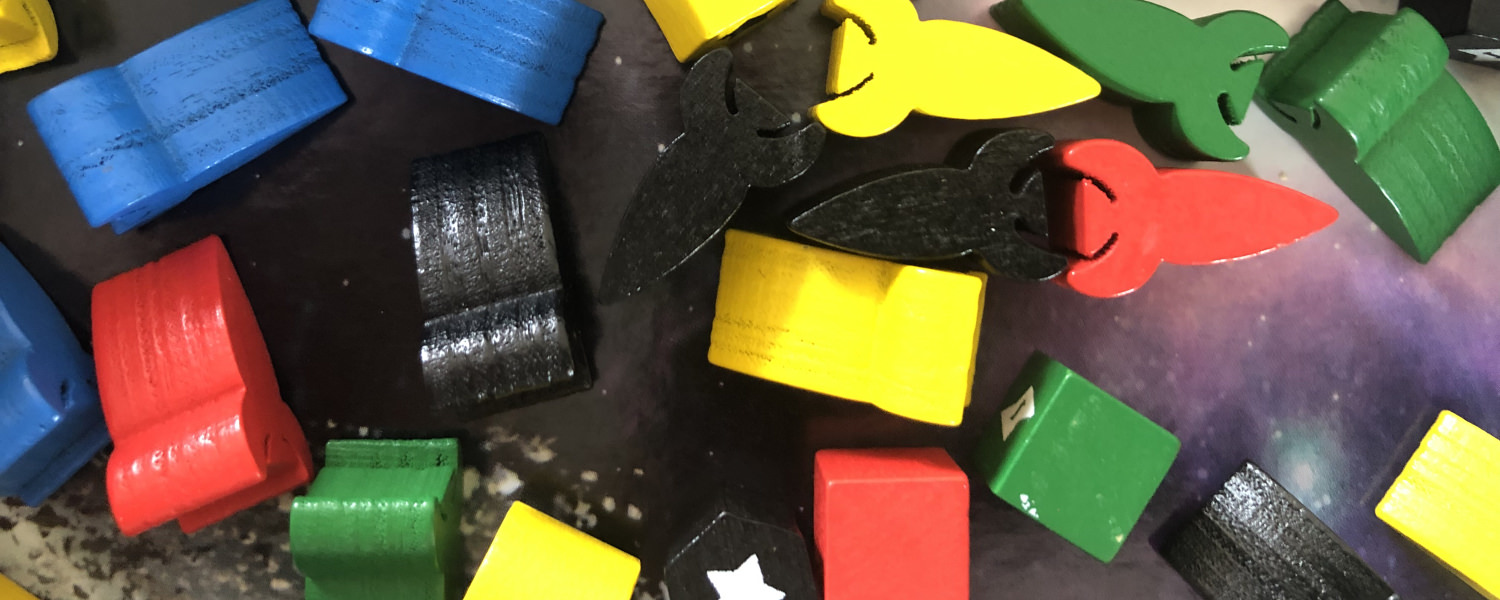
Tiny Epic Galaxies
Tiny Epic Galaxies was one of the first titles in the now very well-known Tiny Epic series. The games are small, come in a well-designed box and are still supposed to bring the gaming experience of a full-fledged board game to the table. Let's take a closer look at whether this really works.
As the name suggests, the game is about galaxies. Our galaxy is overpopulated, so we have to expand. With the help of our spaceships, we colonise foreign planets and expand our empire piece by piece. But our fellow players also have expansion plans, so we need to find the right strategy and be the first player to reach 21 victory points.
Starting the engines
At the beginning, each player gets a galaxy card, a face-down mission and two spaceships. On the galaxy card, available resources such as energy and culture as well as the strength of the empire are indicated by corresponding markers. Laying out the control board and the planet cards (number of players + 2) also completes the set-up.
In Tiny Epic Galaxies, the players take turns making their moves until one player has reached 21 points, which signals the end of the game. A turn always starts with the roll of the available dice. These are then placed on the control board to perform the corresponding actions. The number of dice and the available spaceships depends on the development level of the empire.
Step by step to the largest colony
With the right amount of dice luck, various actions are available to the player. In order to expand and reach foreign planets, the player must of course move his 🎲spaceship. With this action, he can either land on the surface of a planet and collect resources directly, or he orbits the planet with the spaceship on the colony list. On the colony list he can then colonise the planet with the help of 🎲Diplomacy or 🎲Economy. If the player has already colonised planets, he can use them as 🎲colonies. Alternatively, he can upgrade his empire. The stronger the empire becomes, the more cubes and space ships the player can use. With the remaining two actions, the resources 🎲energy and 🎲culture* can be collected.
If you cannot do anything with the dice result, dice that have not yet been activated on the control board can be rolled again without paying any resources. After that, rolling the remaining dice costs one energy. Alternatively, it is possible to turn a die to the desired side using the converter on the control board - but this costs an additional die. As soon as the active player has activated a cube on the control board, the other players have the possibility to copy the action. This costs one culture.
As soon as a player has reached 21 victory points, the end of the game is announced and the current round is played to the end. The secret orders are then revealed and the final scoring begins.
The Rogue Galaxy
Tiny Epic Galaxies offers a solo mode in addition to the competitive game. In this mode, the player must compete against a rogue galaxy that is trying to conquer the entire universe. The game structure corresponds to a large extent to the game for two. The rogue galaxy starts with the back of a galaxy map, four spaceships, as well as zero energy and zero culture. The course of the game changes as follows: The player first takes his turn normally. Then it is the turn of the rogue galaxy. Each available die is rolled individually and processed directly:
- A spaceship is moved and always tries to colonise the planet furthest to the left.
- Culture and Diplomacy always move all spaceships to the corresponding planets.
- Energy is set on the galaxy map. As soon as the maximum energy is reached, the rogue galaxy expands the empire
- Culture is set on the galaxy map. As soon as the maximum culture is reached, it is reset to zero and the rogue galaxy gets an additional turn with three dice.
- Use a colony means attack. The rogue galaxy attacks the player. The type of attack depends on the development level of the empire.
The rogue galaxy wins when 21 victory points are reached or the empire marker reaches the skull square on the empire bar. The player wins as soon as he has reached 21 victory points.
Small and epic?
With Tiny Epic Galaxies, the name says it all. The small box contains a lot of (connoisseur) gameplay that works surprisingly well mechanically. The pleasant iconography makes it easy for new players to get into the game quickly. The game time passes very quickly due to the interaction between the players. On the one hand, actions of the opponent can be copied during his turn, and on the other hand, one must constantly keep an eye on resource management or the yield of the individual planets. A race between several players gladly develops there over the colonies list of the planets.
The inside of the box is optimally used. The possible planetary actions are printed on the bottom. The lid serves as a dice tray. The instructions are easy to understand even in the English version. The design is a bit outdated and is probably best described as technically functional. If you can overlook this, you get a great and challenging game that fits easily into your luggage and works amazingly well - even in solo mode.
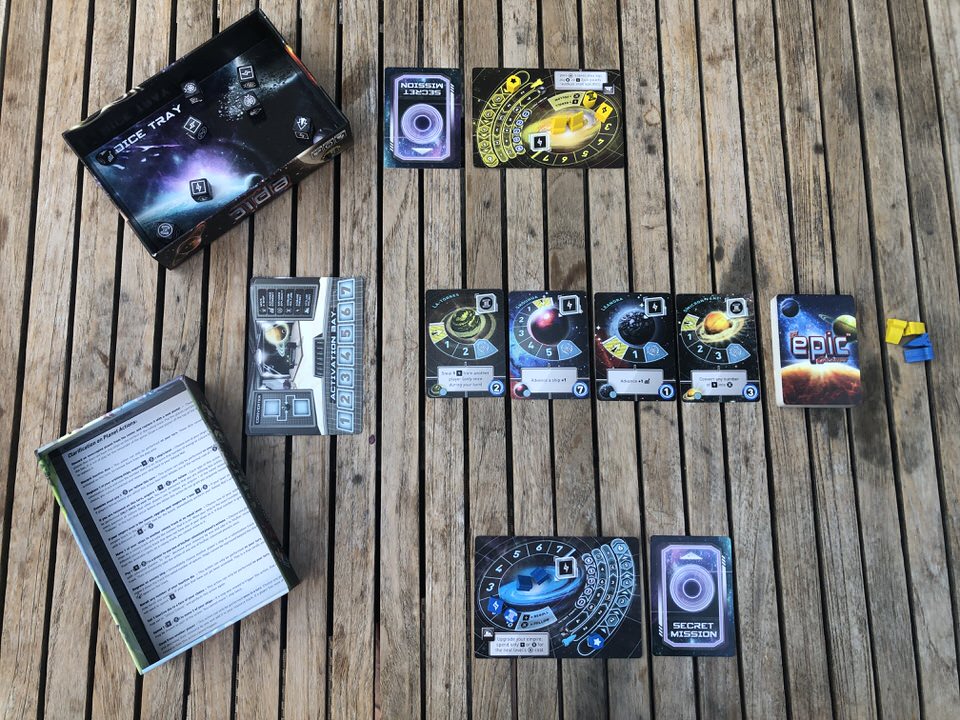
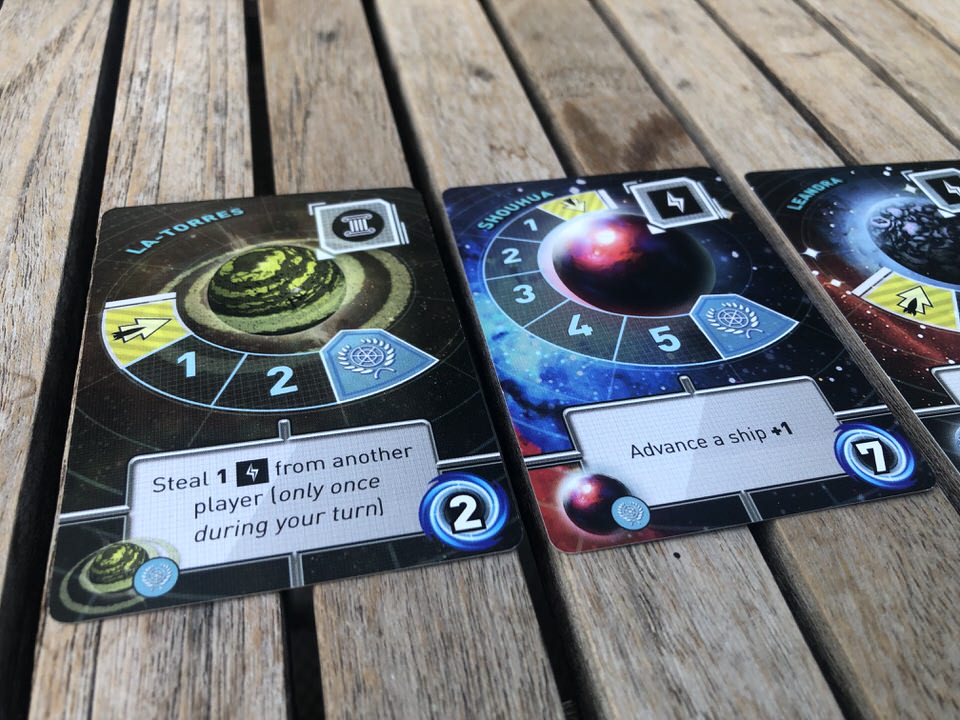


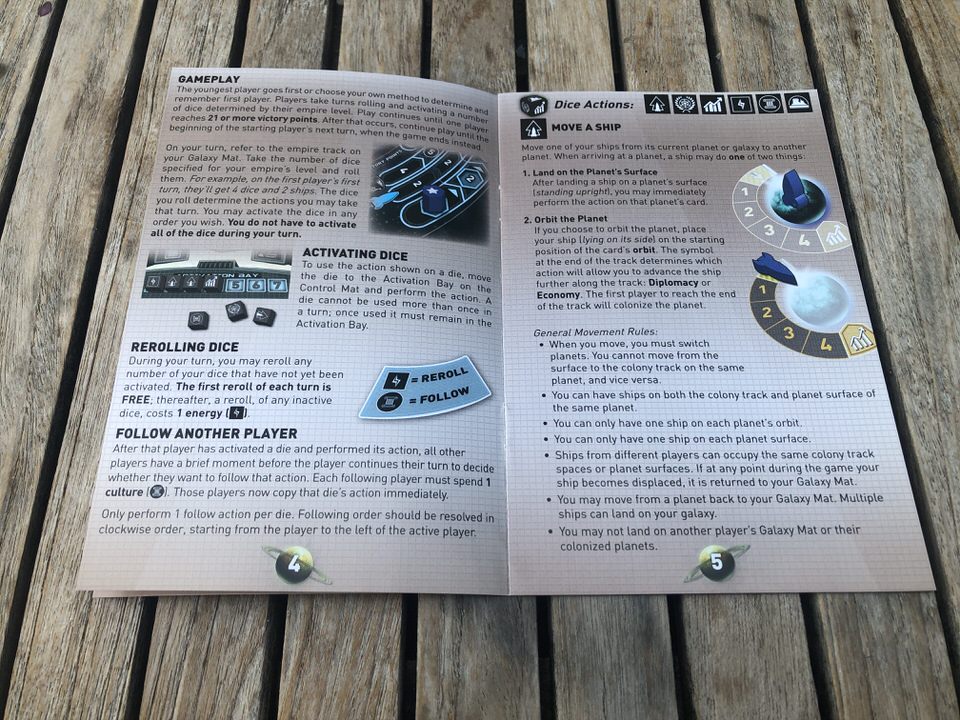
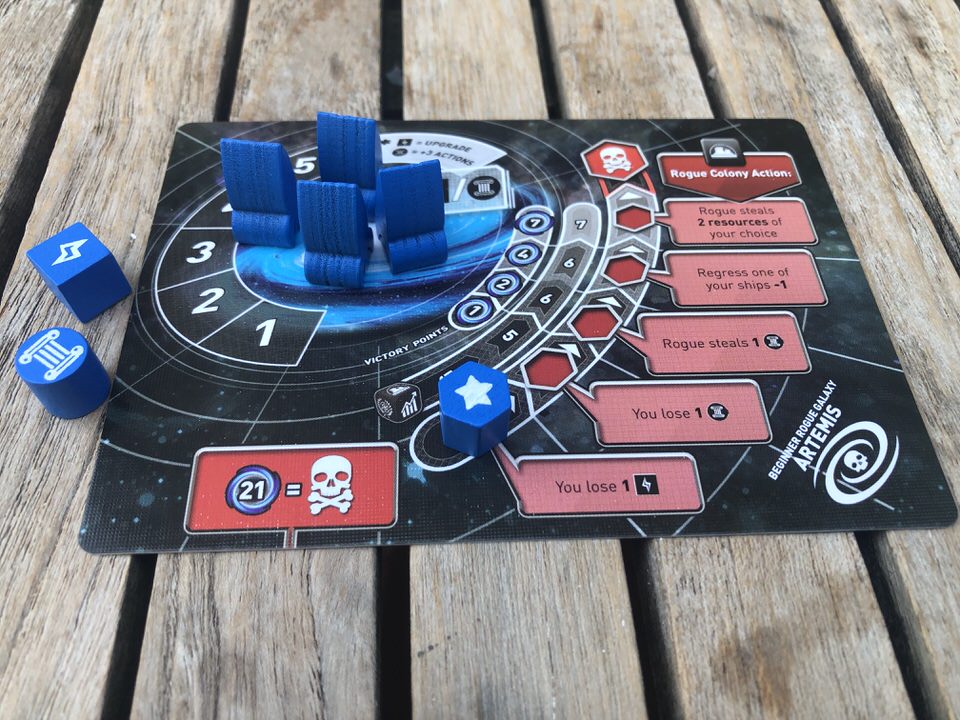
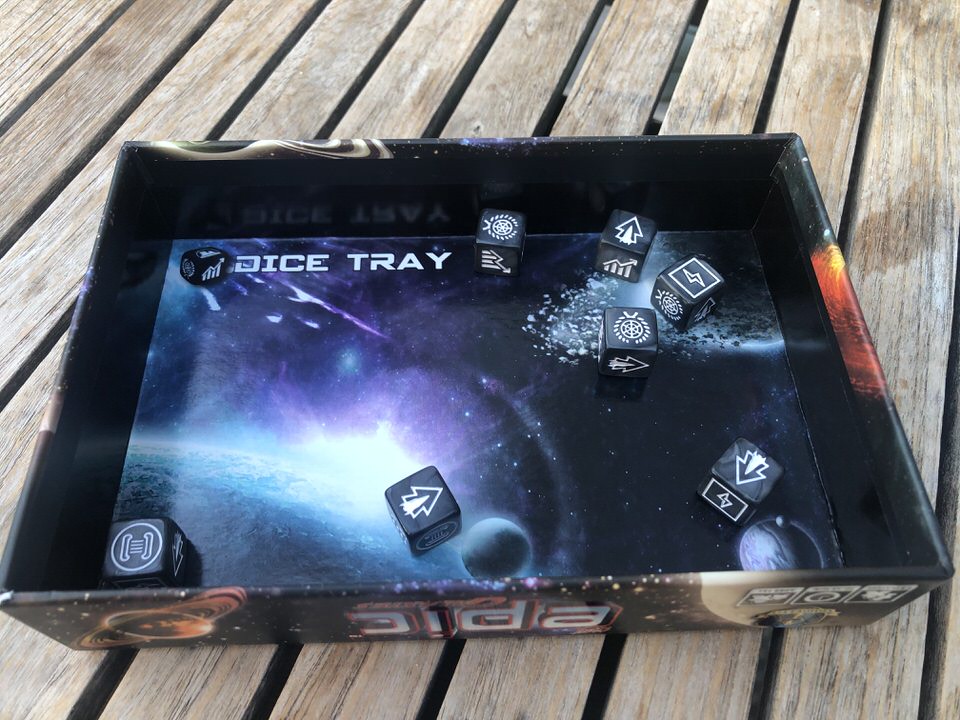
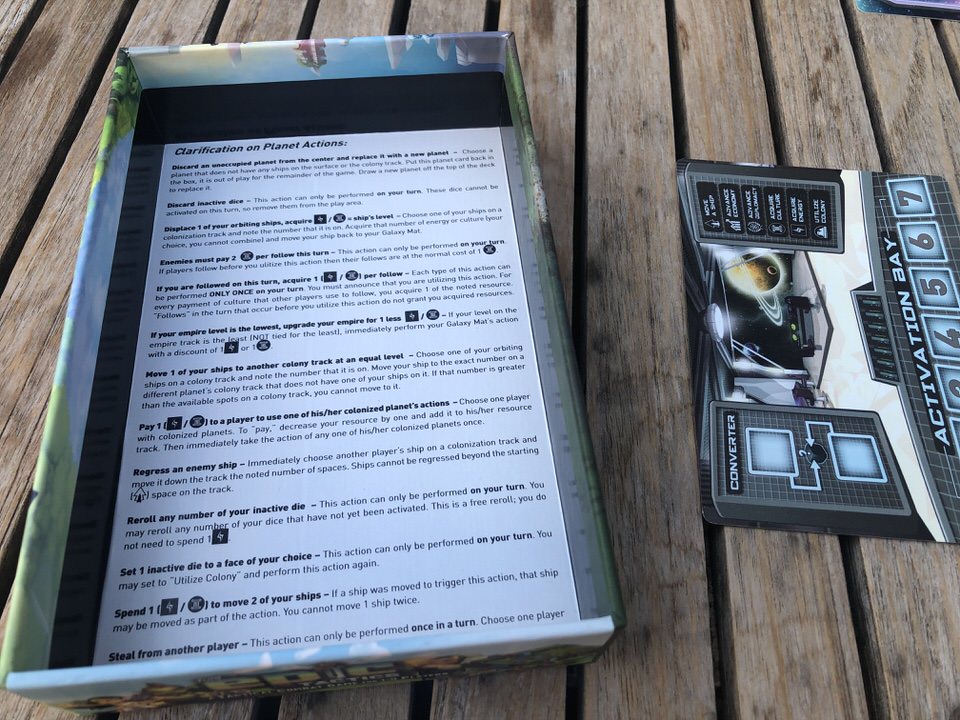
Leave a comment